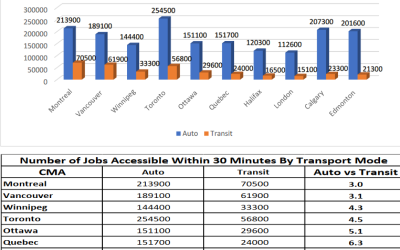Largely unique among state-owned enterprises, ‘SEOs’, worldwide, Canadian Crown corporations have two key advantages over current and future private sector competitors: non-taxable status and access to low-cost public sector borrowing rates. Other implicit edges shared with global sister firms: tacit guarantee of debt and survival via their government ownership; no active shareholders demanding accountability; little scrutiny or consequences for dubious grandiose projects; and no pressure to generate an acceptable return on invested capital, or dividends—or even any positive cash flow at all.
Effects of these factors include lack of innovation, no incentive to improve efficiency or lower costs, demonstrable financial peril for taxpayers and effective or actual monopoly in their operating regions: all provinces save Alberta, sort-of Ontario, and the Maritimes. There is not even significant provincial interconnection which would, at least theoretically, bring competition from neighbouring utilities.
The big monopoly Crown power utilities, BC Hydro, SaskPower, ‘SP’, Manitoba Hydro, Hydro-Québec and Nalcor, owner of Newfoundland & Labrador Hydro, enjoy fat economic rents (except SP) from ownership of all the large, lucrative water reservoir sites, allowing dominant pricing power versus any upstarts. Such rivals would most likely be merchant power providers, either purchasing and selling from others, including the various ‘hydros’, but more likely generating their own. The United States is much more competitive, even within small state markets such as Montana (five companies), South Dakota (seven) or Mississippi (five) and generally much more in larger states: Texas (thirteen), Florida (eleven).
There are several trends, and some other disruptions, threatening the cozy Crown utility model, and are already upending the entire staid, stodgy sector. One is decentralization: smaller facilities, some using abundant and relatively cheap natural gas, are making inroads. In some locations, small solar micro-grids and energy storage already make sense, just as autonomous power alternatives make sense for larger commercial or institutional customers. Fuel cells that use natural gas or biogas are finding clientele. Other customers or competitors are generating power from waste material or waste heat.
Another disruptor is the advent of small modular reactors: self-contained ultra-safe low capacity generation modules that can be scaled up just by adding more, when needed, and can take one or several customers off the utility grid. Two trends or concerns also threaten the Crown monopoly model: reliability of supply, and dependence on a single supplier. While outages are not common in Canada, they do happen and can be damaging to operations for industrial, commercial and technology-heavy customers, as occurred in California and in Texas. Dependence on any single supplier is a potential disaster, as major blackouts Hydro-Québec (1998, 2003, 2019) foisted on its customers show.
Rapid improvements in various energy storage technologies are making renewable power sources more viable, in practical as well as commercial terms. New, smarter ways to manage, balance and dynamically price, power demand and supply are advancing. It is nearly impossible to believe that the current provincial monopoly electrical provider model will still exist in 20 years, let alone 40 or 50, and that the public treasury, taxpayers and customers will still be suffering through it all. Better to break them up, sell them off and, at a minimum, compel them to pay taxes, dividends and no longer enjoy a government guarantee of their existence, debt or interest borrowing costs, as Australia did.
Ian Madsen is a senior policy analyst with the Frontier Centre for Public Policy and the author of the forthcoming book, 111 Reasons to Sell Off or Shut Down State-Owned Enterprises.
Photo by Doris Morgan on Unsplash.



